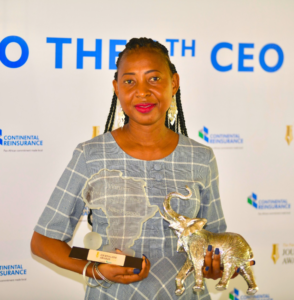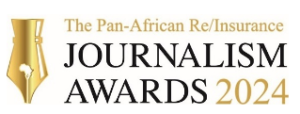Solution Journalism Network, also called SoJo, is expanding its training opportunities to the African region. I had the chance to talk with Carolyn Robinson, who would be leading the training programs in Africa this year.
Carolyn, a video journalist, media program director, and educator has many years of journalism practice under her belt. She is also a recipient of the Jefferson Fellowship, Freedom Forum Fellowship and four Knight International Journalism Fellowships.
Her journalism and media training experience transit beyond the shores of the U.S.
“I began my career with CNN’s medical news unit in Atlanta before relocating to Asia and the Middle East, first as a senior news producer in Hong Kong, and then in East Timor, where I ran the local TV station for the United Nations,” she wrote in the email describing her venture into the SoJo network.
She served as a “media program director in post-revolution Libya, overseeing journalism training projects in Tripoli and Benghazi, and was an assistant professor of journalism at Washington State University.”
It was while searching for online training materials for a workshop in Algeria that Carolyn discovered SoJo.
“The concept of focusing on solutions as much problems in covering the news resonated with me instantly,” she said.
She went ahead to introduce a workshop session on solution journalism into her presentation. The reporters, editors, and producers – about 90 of them – in Algiers responded positively to the training.
“Their reactions made me realize that the idea of Solutions Journalism spans cultural, linguistic and political boundaries around the world,” she said.
Carolyn talked more about the plans to expand SoJo to African countries and the expected impact of the project:
Can you share one example or two of the stories you’ve covered using the SoJo approach and the impact that they’ve made?
We do not generate our content at SJN; rather, we assist others in doing their solutions journalism stories and projects. For example, the Minneapolis Star Tribune has been working with us to produce a solutions journalism series called “Muslims and De-Radicalization: What Works?” Their team has produced about 20 stories, with many pieces focusing on efforts to prevent some members of the large Somali community in Minnesota from becoming radicalized. Rather than just looking at the extent of the problem, these reporters traveled to Denmark, London, and Maryland to investigate how these communities responded to this issue, some more successfully than others. From these stories, the Star Tribune held community forums to connect directly with local Somalis and listen directly to their concerns, translated these stories into Somali, hired a Somali journalist, and created a partnership with a local Somali newspaper.
In another partnership, the El Paso Times looked for solutions to chronic health conditions like liver disease that are experienced disproportionately in the Hispanic community. They joined with numerous community health groups and clinics, three local hospitals, the city health department, two universities, and even the Mexican Consulate in El Paso to explore responses to this problem in other cities with large Hispanic populations like Los Angeles and Chicago, to discuss whether the same approaches could work in El Paso. SJN supported a podcast series plus an interactive game with prizes that drew thousands of people into these stories, significantly raising awareness of this issue as well as possible solutions to prevent the problem.
From your experience, what are some of the challenges any reporter will encounter while using the SoJo approach for reporting the news? And how can they tackle these challenges to produce quality reports?
Some reporters tell us that they just do not have the time to investigate potential solutions stories due to daily deadline pressures. This is certainly a valid concern in today’s newsrooms – both big and small – but as a reporter from one of our very small newsroom partners told me, the answer lies in good time management. In other words, carve out an hour here or there during the day to do background research on solutions stories, in between covering breaking or daily news – then, when you reach a critical mass of story research, or an important deadline looms, you can ask your editor for dedicated time to finishing the story.
Increased access to social media is turning news consumers into active news producers with some thriving as publicists and influencers. Are there any concerns that SoJo can become adapted as a PR tool for big corporations seeking to win public trust through social good?
It’s not Solutions Journalism unless it is first and foremost just plain good journalism. Public relations efforts by big corporations do not meet this key definition. PR is PR –, not journalism. Same thing with activist campaigns – advocacy is not journalism, either. Both practices use journalistic skills and techniques, but public relations and activist campaigns b th have agendas and seek to influence the public to one point of view – their own. Journalism seeks fundamentally to inform the public – and Solutions Journalism takes journalism one step further by covering not only the problems facing society but also the different responses that people use to solve problems, whether these succeed or not. We believe that this approach to journalism gives people the information they need to make necessary changes in their communities, and also empowers them to take knowledgeable actions on their own.
Tell us about some of the SoJo training you have planned for the African region. Are you doing this in partnership with traditional newsrooms?
After we had found considerable enthusiasm for Solutions Journalism at a gathering of African editors, publishers, reporters, and producers in Johannesburg, we began to develop plans for workshops in both east and west Africa, initially aiming at Lagos and Kampala this year, plus other locations next year. We will work with local media partners in Nigeria, Ghana, Kenya, Tanzania and Uganda for starters, with plans for both southern and Francophone Africa.
Can you tell us more about how the SoJo tracker fits into the big picture?
The Solutions Story Tracker is a curated, searchable database of 1700+ stories about responses to social problems, submitted by hundreds of newsrooms around the world. It’s designed to help journalists and others identify emerging ideas, approaches and patterns in social change around the world. We tag every story by a variety of fields, including date, issue, location, publication, scope, media type, and success factors. The Story Tracker is one of SJN’s most popular resources for journalists who want to find leads and sources for their stories or just to see good examples of solutions journalism done by others.




